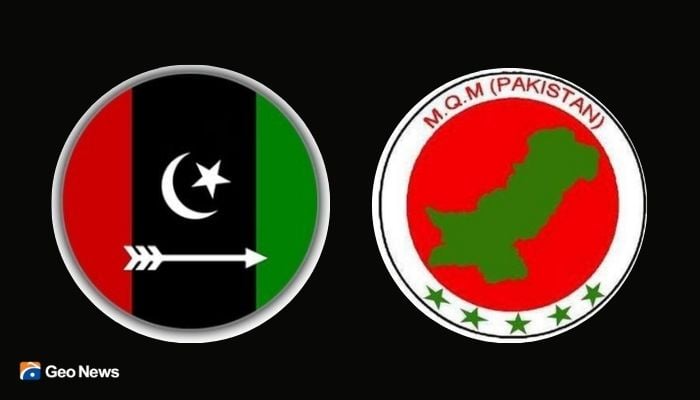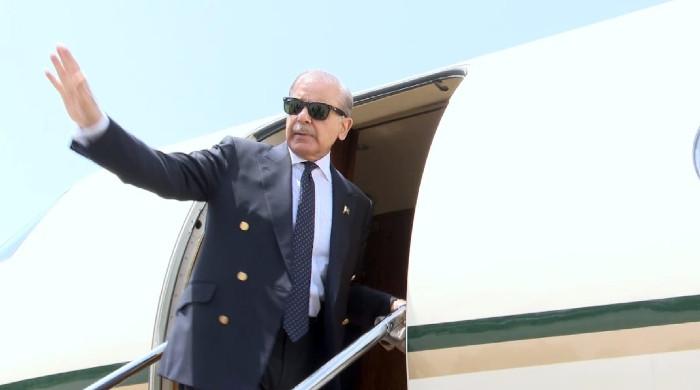PPP and MQM: A history of disputes since 1988
Latest MQM-led protests against PPP in Sindh forced some PSL franchises to cancel their practise session
January 27, 2022

LAHORE: This is not the first time the Muttahida Qaumi Movement (MQM) and Pakistan People’s Party (PPP) are at daggers drawn against each other.
The latest MQM-led protests against the incumbent PPP regime in Sindh also forced some Pakistan Super League (PSL) franchises to cancel their practise sessions Wednesday evening, just hours before the start of the professional T20 Cricket league, irking the Pakistan Cricket Board (PCB), PSL, franchise owners and other stakeholders.
Since December 1988, when MQM was pivotal in the formation of the Benazir Bhutto-led government by becoming its ally, the two political entities have nourished a love-hate relationship with each other.
On December 16, 1988, or hardly a fortnight after Benazir was sworn-in as the country’s premier, a partial curfew was ordered in Karachi after the death toll from ethnic rioting had surged to 10.
However, the MQM left the coalition in October 1989 when differences developed after dozens were killed at an MQM congregation by Sindhi nationalists, and the alliance fell apart in the wake of the ensuing violence.
The two parties again came together in July 2000, when a Nationality Accountability Bureau court had found MQM leader, Farooq Sattar.
In August 2002, however, Farooq Sattar ruled out the possibility of any electoral alliance with the PPP. On October 12, 2002, after the PPP was unable to form a provincial government (following the split mandate from the October 2002 elections) without the cooperation of either the independent winners or the MQM, the late Benazir Bhutto said she did not rule out cooperation with Altaf Hussain’s political entity, provided the differences were set aside for the sake of a new beginning.
On October 29, 2002, the PPP and MQM held negotiations and agreed to continue dialogue to form a coalition government in Sindh. It was in the not-so-distant past when both MQM and the PPP joined hands in both the federal government and the Sindh Assembly after the February 2008 polls.
MQM withdrew from the federal cabinet, and its members were bitterly opposed to the PPP's Interior Minister in Sindh, Zulfiqar Mirza. On August 2, 2010, riots started after the assassination of a parliamentarian, Raza Haider, who was a member of MQM.
By August 3, 2010, at least 35 people were killed, and on August 17, unidentified gunmen killed the son of a prominent Shia cleric and three policemen in a series of targeted attacks. The delimitation of Karachi’s constituencies and target killings also remained the bone of contention between the two coalition partners throughout the 2008–2013 PPP regime, as did the National Reconciliation Order (NRO) issue.
The MQM had opposed the NRO in November 2009, while the PPP hierarchy had tried to legalise it by making it part of the constitution. The reformed general sales tax issue has also proved an apple of discord between these two political entities. The MQM had correctly rejected the proposed tax, and the horns were locked.
Last but not least, when the then Sindh Home Minister, Zulfiqar Mirza, accused the MQM of being involved in target killings, the MQM founder and his lieutenants were infuriated. They demanded the immediate removal of Mirza, and the MQM gave a 10-day deadline to the PPP government in this context.
Ultimately, MQM left the federal cabinet on December 27, 2010, but decided to sit on the treasury benches and support the government. Interestingly, this decision was reversed by MQM only five days later, and its parliamentarians were seen requesting seats on the opposition benches.
In October 2011, just hours after Chaudhry Shujaat Hussain’s Pakistan Muslim League-Q had announced that it would not be leaving the PPP-led ruling coalition (as was being widely speculated), the MQM said that it would rejoin the Treasury benches.
In February 2012, MQM quit the PPP-led Sindh and central governments.
In October 2012, when President Zardari called on MQM's founder in London, the two parties again affirmed that they would continue their uneasy alliance.
In February 2013, the MQM yet again announced its intention to quit the PPP government.
In June 2013, various PPP leaders appeared optimistic in the media about MQM joining the Sindh government.
On February 4, 2014, both MQM and PPP lawmakers were seen fighting on the Sindh Assembly floor.
And in January 2014, the PPP invited its former ally, the MQM, to rejoin the Sindh government.
For the umpteenth time, the MQM ended its short-lived coalition with the PPP in Sindh in November 2014.
Originally published in The News











